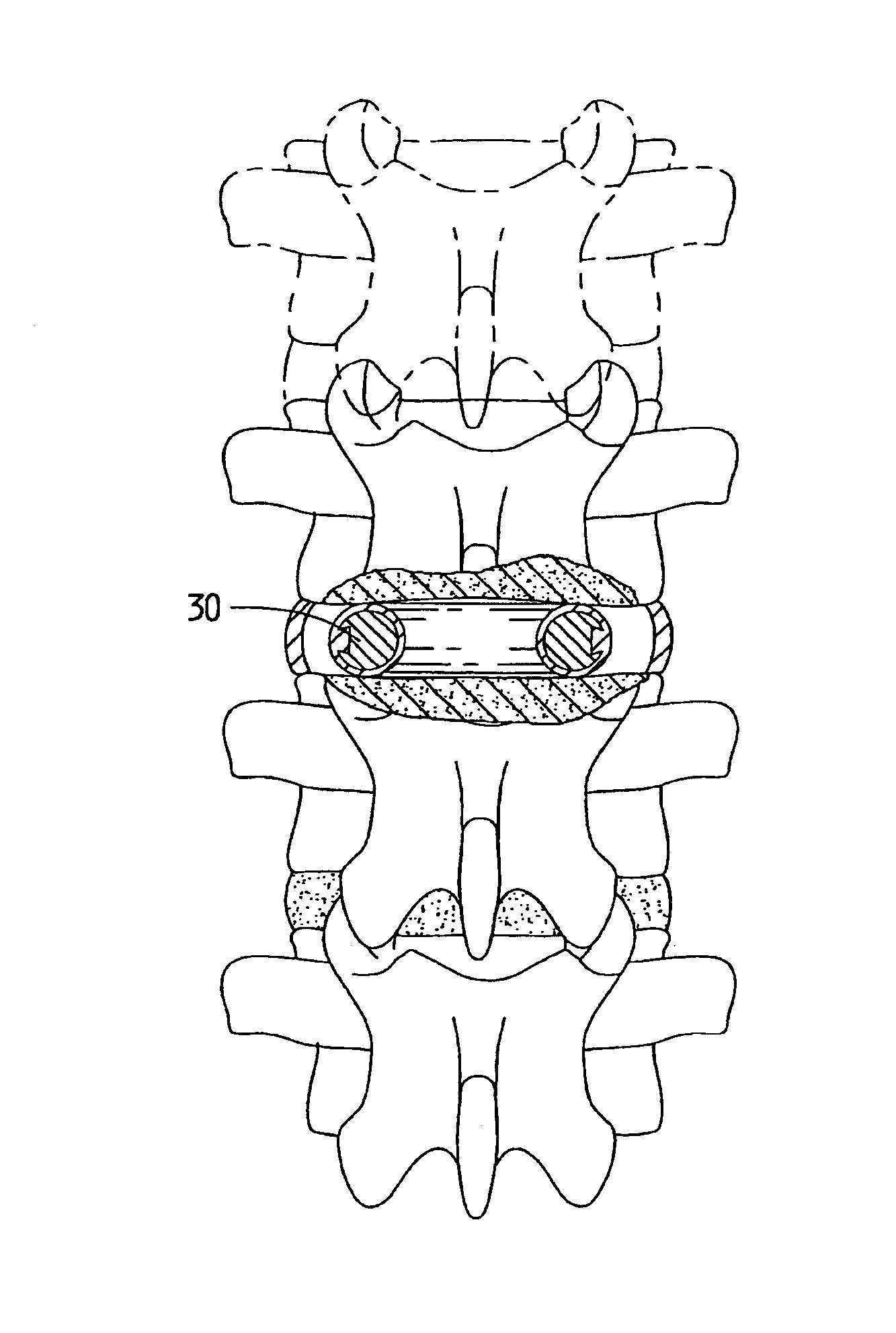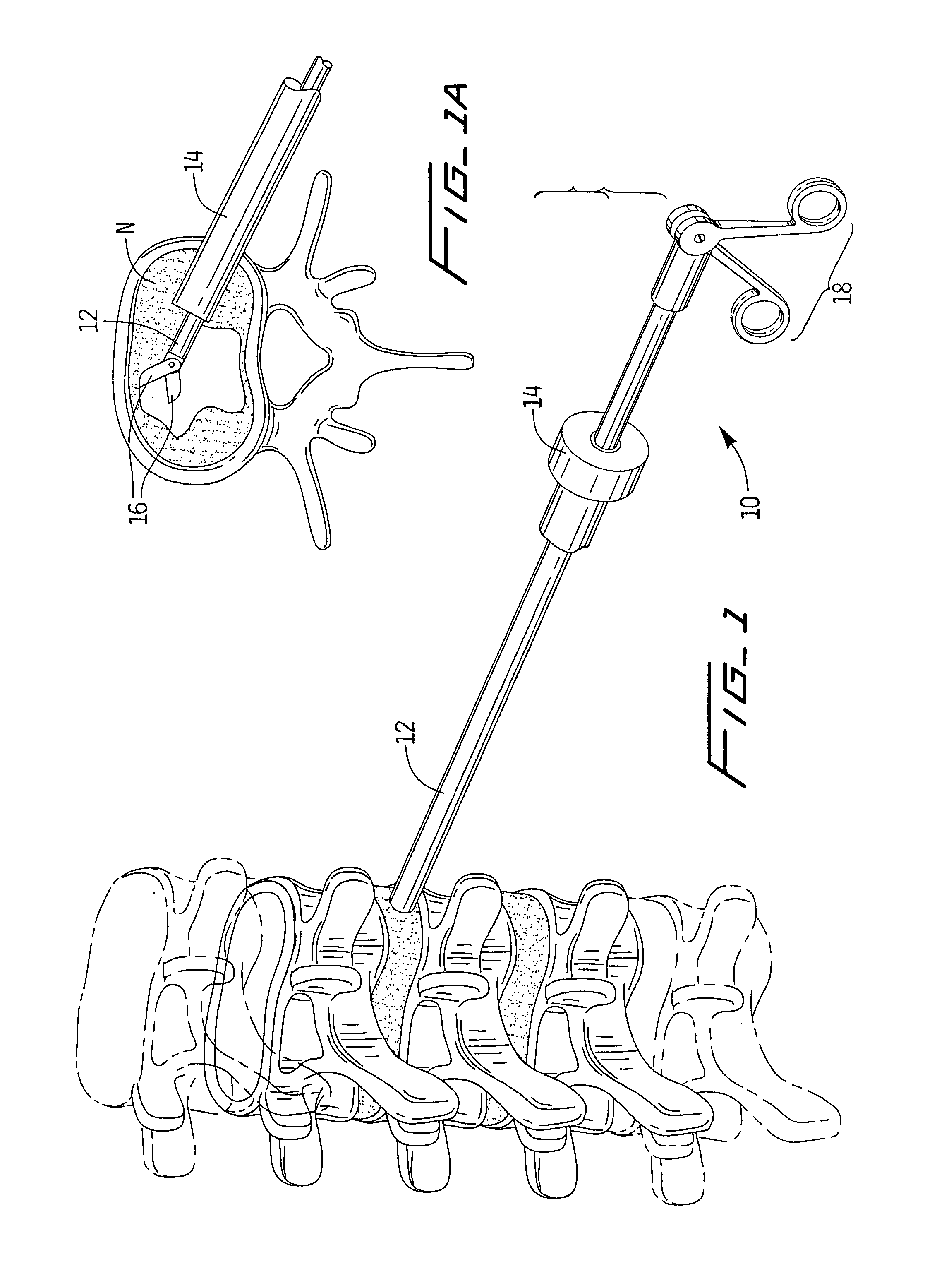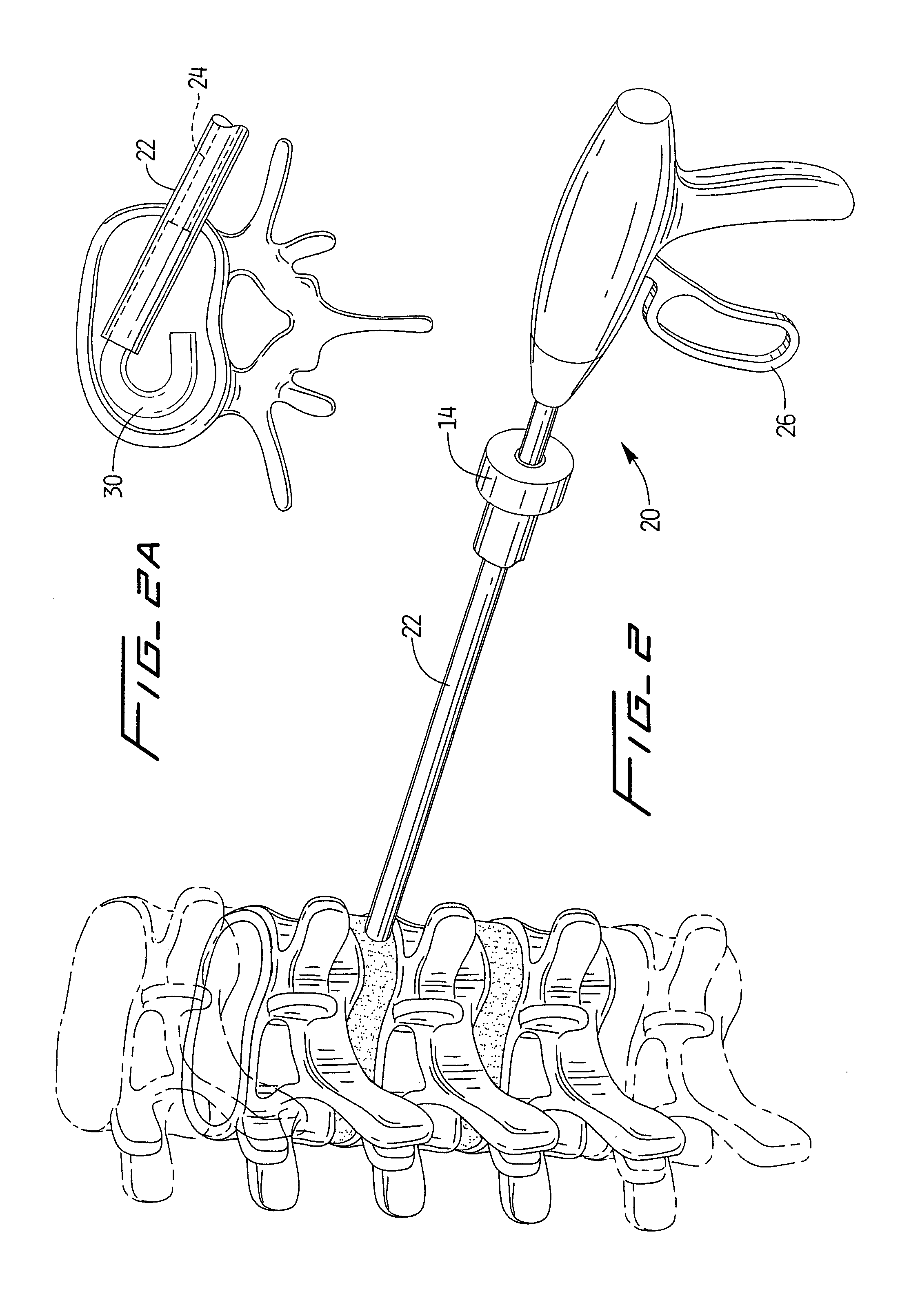Spinal implant and method of use
a technology of spinal disc and implant, applied in the field of spinal disc implant, can solve the problems of reducing bone ingrowth, reducing bone density, and requiring major open surgery, and achieve the effect of enhancing bone ingrowth
- Summary
- Abstract
- Description
- Claims
- Application Information
AI Technical Summary
Benefits of technology
Problems solved by technology
Method used
Image
Examples
Embodiment Construction
[0068]Referring now in detail to the drawings where like reference numerals identify similar or like components throughout the several views, several different embodiments of the spinal implant of the present invention are described herein. The spinal implants have differing cross-sectional configurations and can optionally contain an insert material to fill the void in the otherwise hollow implant and to provide more cushioning if desired. Each of these variations is described in detail below.
[0069]The spinal implants of the present invention are designed to be inserted minimally invasively into the disc space, thus enabling a smaller incision to be used in the procedure. This is achieved by the implants being compressible radially to a smaller diameter / height for delivery and being deflectable laterally to a substantially linear configuration. Once ejected from the delivery instrument at the desired site, i.e. the disc space between adjacent vertebrae, the implant returns to a lar...
PUM
 Login to View More
Login to View More Abstract
Description
Claims
Application Information
 Login to View More
Login to View More - R&D
- Intellectual Property
- Life Sciences
- Materials
- Tech Scout
- Unparalleled Data Quality
- Higher Quality Content
- 60% Fewer Hallucinations
Browse by: Latest US Patents, China's latest patents, Technical Efficacy Thesaurus, Application Domain, Technology Topic, Popular Technical Reports.
© 2025 PatSnap. All rights reserved.Legal|Privacy policy|Modern Slavery Act Transparency Statement|Sitemap|About US| Contact US: help@patsnap.com



